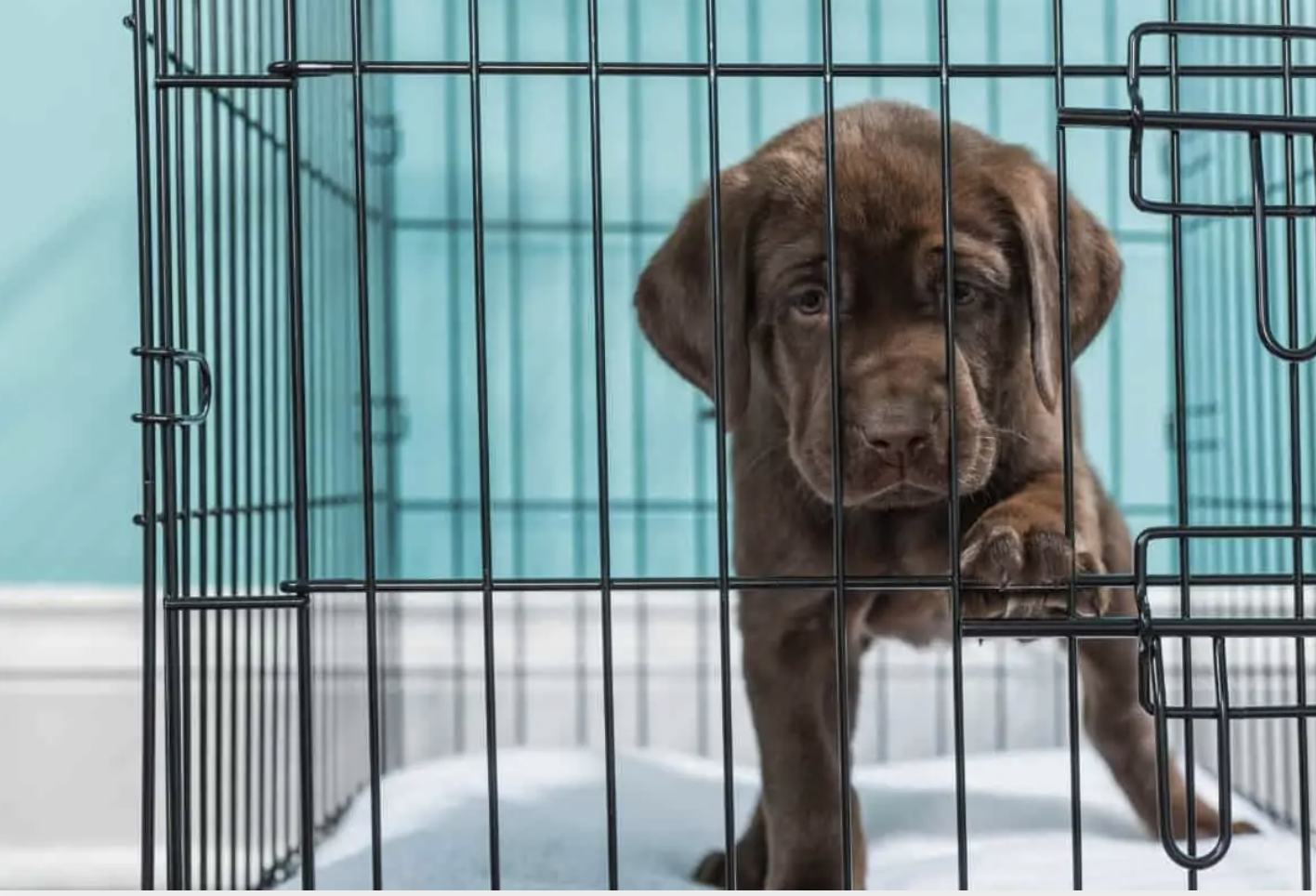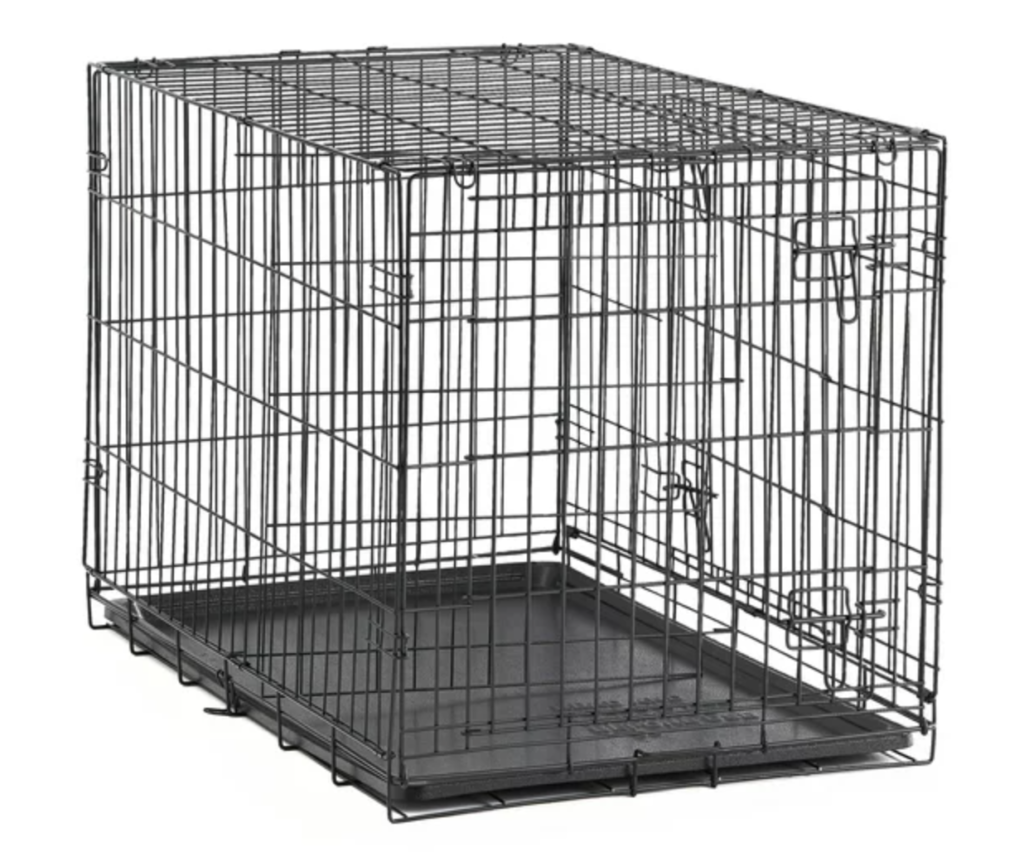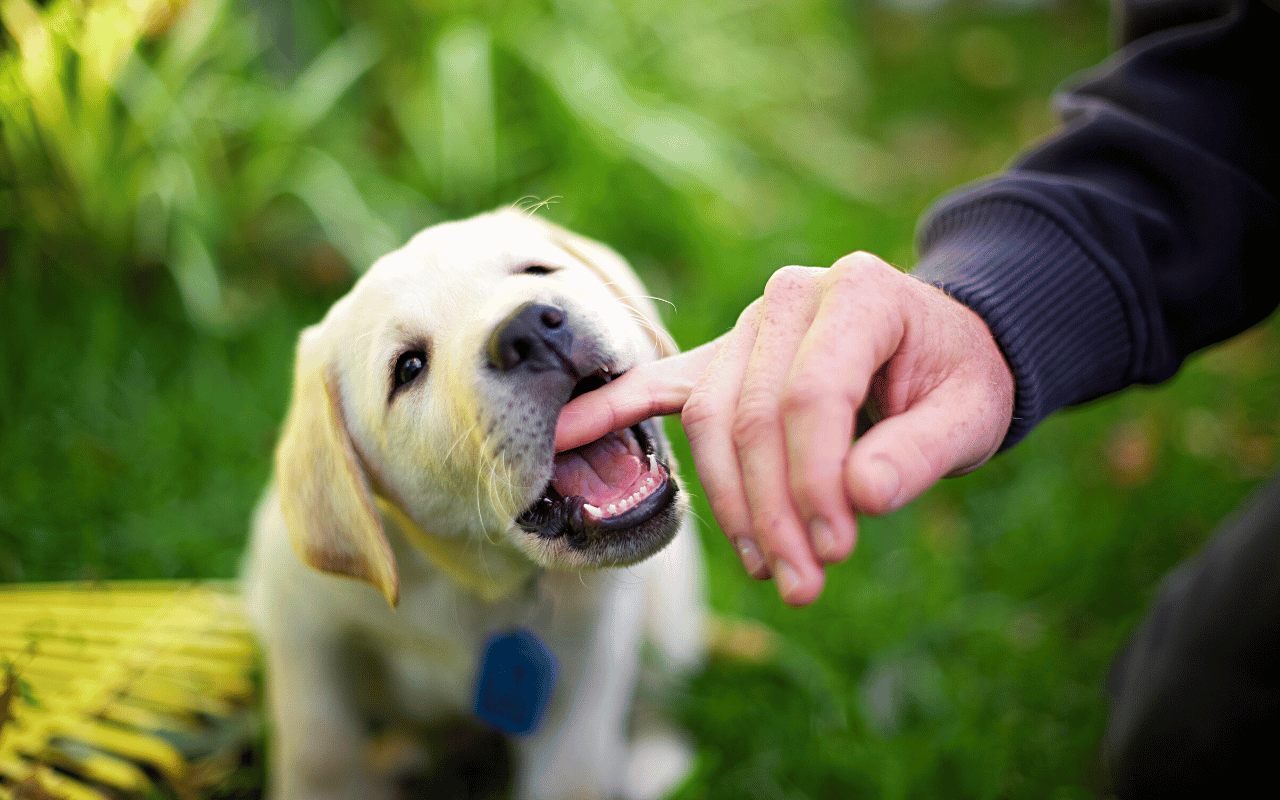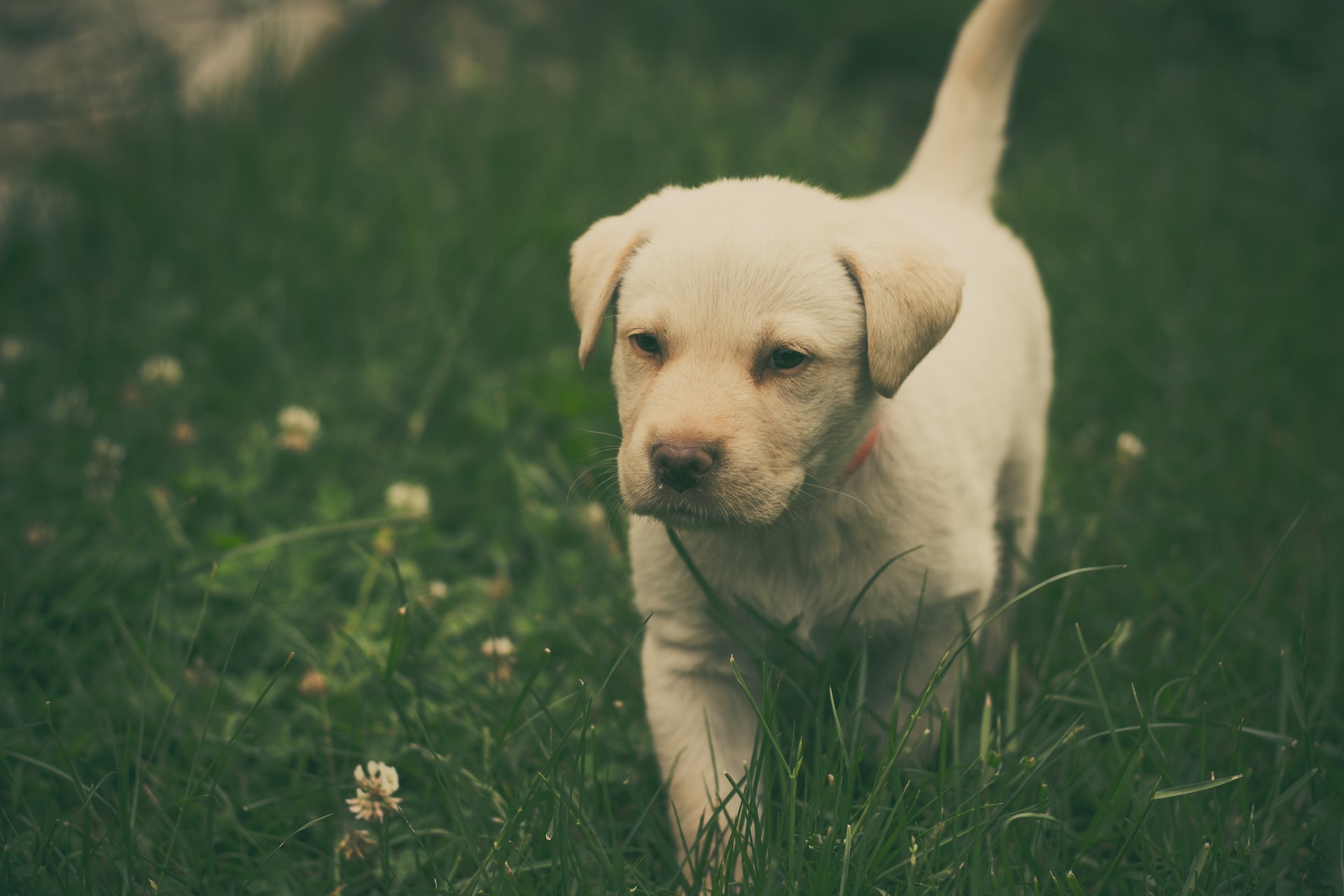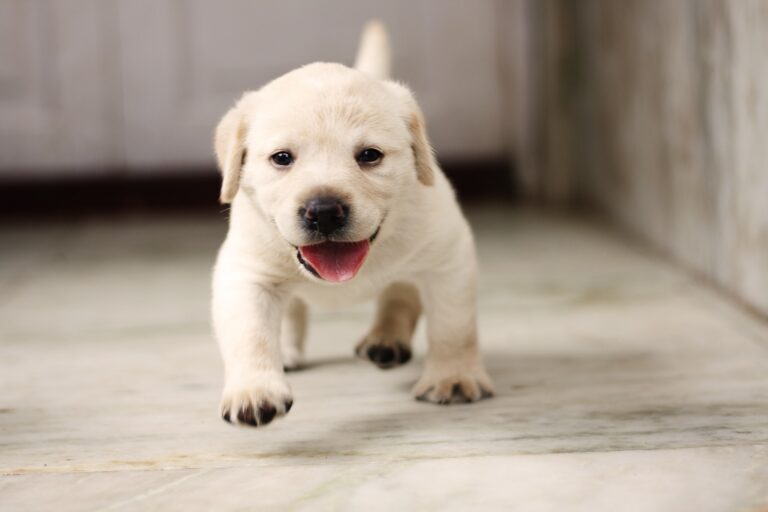What Size Crate Is For A Labrador Retriever: The Perfect Fit
Are you wondering what size crate is for a Labrador Retriever? Do you want to find the perfect fit for your pup? Furthermore, are you looking for a crate that will be comfortable and safe?
The answer to these questions depends on several factors, including the age of your Labrador Retriever, their size, and how much room they need. If you’re anything like me, you want only the best for your furry friend. To help you make the right decision, here are some helpful guidelines for finding the perfect crate size for your Labrador Retriever:
Understanding Labrador Retriever Growth and Development
Let’s take a little journey through the various life stages of our Labs and see how their growth affects their
Puppy Stage
Aren’t Lab puppies just the cutest? In this stage, which lasts from birth until around six months, your little furball will grow incredibly. They’ll weigh somewhere between 12-20 pounds at about eight weeks old. But hold on tight because they could already be 40-50 pounds by six months! This rapid growth means that you’ll need a crate that can accommodate their changing size and keep them feeling safe and snug during these early months.
Adolescent Stage
Just like teenagers, adolescent Labs (between six months and two years old) continue to grow but at a slightly slower pace. At this point, your buddy will likely weigh between 50-70 pounds, depending on whether they are male or female and their unique growth patterns. As your Lab grows, you’ll want to ensure its crate is still the right fit, giving them enough room to stretch out and relax while feeling secure.
Adult Stage
Time flies, and now your Lab has reached adulthood. By around two years old, your Labrador Retriever should have reached their full size, with males weighing between 65-80 pounds and females between 55-70 pounds. Keep in mind that some Labs might continue to fill out and gain muscle mass until they’re three years old. At this stage, you’ll want a crate that provides plenty of space for your adult Labrador to stand up, turn around, and lie down comfortably.
Determining The Appropriate Crate Size for Different Life Stages
Once you understand how your Lab grows and develops, it’s time to look for the right crate size.
Dog Crate Size Recommendations for Puppies
When your Labrador puppy is just a little furball, you’ll need a smaller crate that makes them feel safe and secure. But remember, they grow up so fast! As they get bigger, you’ll want to adjust the crate size accordingly, ensuring they always have enough space to stretch out and be comfortable.
Here’s a neat trick: you can use a divider in a larger crate to create a cozy space for your puppy. This way, you won’t need to buy multiple crates as your Lab grows. Just move the divider to give them more room as they get bigger!
Dog Crate Size Recommendations For Adolescent
Your adolescent Lab will still be growing, so it’s essential to anticipate those growth spurts. Make sure their crate provides enough space for them to move around and relax while still feeling secure. Consider going one size up to accommodate their growth.
As your Lab gets bigger, proper ventilation and visibility become even more important. Look for a crate with good airflow and visibility so your adolescent Lab can see what’s happening around them, keeping them engaged and happy.
Dog Crate Size Recommendations for Adult
By now, your Lab has reached its full size, so it’s time to find a crate that allows them to stand up, turn around, and lie down comfortably. A good rule of thumb is to measure your Lab from nose to tail and add 4-6 inches for the crate length.
Every Labrador Retriever is unique, so consider your dog’s specific size and build when choosing a crate. If your Lab is taller or more muscular than average, you might need a slightly larger crate to ensure their comfort.
Additional Factors to Consider When Selecting a Crate
Aside from size, there are a few other features you’ll want to consider when selecting the perfect crate for your Lab.
Material and construction
Wire Dog crates
Wire crates are super popular because they provide excellent ventilation and visibility for your Lab. Plus, they’re easy to clean and often come with dividers, which can be a lifesaver as your pup grows. On the downside, they can be heavy and may not feel as cozy as other options.
Plastic Dog crates
Plastic crates are another great choice, especially if you need something lightweight and portable. They’re also more enclosed, giving your Lab a sense of security. However, they may offer less airflow or visibility than wire crates.
Soft-sided crates
If you’re looking for something ultra-portable and lightweight, soft-sided crates might be right up your alley. They’re perfect for travel or occasional use, but remember that they’re not as durable or secure as wire or plastic options, so they might not be the best choice for everyday use.
Portability and Ease of Assembly
Trust me, when life gets busy, having a simple crate to set up and move around can be a real game-changer!
Now, imagine this scenario: you’re going on a weekend getaway, and you want to bring your furry friend along for the adventure. The last thing you need is to struggle with a heavy, complicated crate that takes forever to assemble, right? That’s where portability and ease of assembly come into play.
Some crates, especially wire ones, can be pretty hefty. If you plan to move the crate frequently or take it on trips, consider a lightweight option like a plastic or soft-sided crate. These types of crates are typically easier to carry and transport, making your life much simpler.
And don’t forget about storage! When you’re not using the crate, you’ll want something easily stored without taking up too much space. Many crates can be folded flat or disassembled for compact storage, which is a huge plus if you’re short on space.
Safety Features
When it comes to safety features in a crate, there are a few key things to look out for. Let me break them down for you:
Secure latches: First and foremost, you’ll want to ensure the crate you choose has strong, secure latches. The last thing you need is your clever Lab managing to unlock the door and go on an unsupervised adventure! Some crates even come with double-locking mechanisms or a latch cover to provide an extra layer of security.
Sturdy construction: A well-built crate is essential for keeping your Labrador safe. Look for crates made from high-quality materials that can withstand your dog’s strength and energy. This is especially important if you have a larger or more rambunctious Lab that might try to escape or chew its way out!
Rounded corners: Have you ever accidentally bumped into a sharp corner? Ouch, right? Well, your Lab feels the same way! When choosing a crate, opt for one with rounded corners and smooth edges to prevent injuries and ensure your pup’s comfort.
Proper ventilation: Good airflow is crucial for keeping your Lab healthy and happy in its crate. Look for options with plenty of ventilation holes or mesh panels allowing fresh air circulation. This will help prevent overheating and keep your fur baby feeling cool and comfortable.
No gaps or protrusions: Lastly, inspect the crate for any gaps or protruding parts that could potentially injure your Lab or get them stuck. Their collar or tags could get caught on something, so ensuring the crate is free of any hazards is essential.
Customizing The Crate For Your Labrador Retriever
Once you’ve selected the perfect crate for your Lab, it’s time to spruce it up and make it their own! Here are a few ways to customize their space:
Crate mats and dog beds: Soft bedding can make all the difference in comfort. You may want to consider adding a crate mat or dog bed inside the crate for your Lab to cozy up in.
Toys and treats: Throw in some of their favorite toys or treats to make their crate even more inviting. This will help keep them occupied during times when they’re confined.
Divider panels: If you have a wire or plastic crate, you can purchase a divider panel to help your Lab grow into the crate as they get older. This will prevent them from having too much space at once, which can lead to accidents or bad behavior.
Crate covers: If your Lab prefers more privacy and darkness while sleeping in its crate, you may want to invest in a cover. This will help create a cozy, den-like atmosphere and make them feel safe and secure.
Frequently Asked Questions
Q: Does crate training work for Labradors?
A: Absolutely! Crate training can be a great way to help your Labrador Retriever learn boundaries and create a safe space that’s all it’s own. With patience and consistency, you should be able to teach your pup the basics of crate training in no time.
Q: How can I crate train my Labrador Retriever?
A: Since Labrador Retrievers are generally very food-motivated, treats can be a great way to reinforce positive behavior regarding crate training. Start by placing their favorite snack in the crate and encouraging them to enter with a “good boy/girl!” Once they get comfortable going in and out of the crate, you can gradually increase the time they stay in it.
Q: Do I need a double door for my large dog?
A: A double door is highly recommended for larger breeds like Labradors. This way, you can easily access the crate from any side without forcing your pup out of its safe space. Double doors also make it much easier to reach in and grab items without opening the entire door every time.
Q: What travel crate should I get for my Labrador Retriever?
A: When traveling with your pup, you’ll want a soft-sided crate. These types of crates are lightweight, super portable, and usually come with several handy features like mesh ventilation panels or foldable designs that make them great for travel. Make sure to look for an option with sturdy construction and secure latching mechanisms to keep your furry companion safe on the go.
Q: Is metal wire or plastic better for a Labrador Retriever?
A: It really depends on your individual needs and preferences. Wire crates provide plenty of visibility and airflow, while plastic crates provide more security and privacy. Ultimately, you’ll want to select the best crate for your pup based on their size, personality, and lifestyle.
Final Words
Now that we’ve covered everything from sizing and materials to safety features and customizations, I’m sure you feel more confident in your crate-shopping endeavors.
To sum it all up, when choosing a crate for your Lab, keep its life stage, growth, and unique size in mind. Remember that puppies need smaller spaces that can be adjusted as they grow, while adolescent and adult Labs require room to stretch out, stand up, and turn around comfortably. And don’t forget to consider portability, ease of assembly, safety features, and all those fun accessories that will make your Lab’s crate feel like home.
Ultimately, the goal is to find a crate that keeps your Labrador Retriever safe, comfortable, and happy. And with all the knowledge you’ve gained, I have no doubt you’ll be able to find the perfect crate for your furry best friend.

